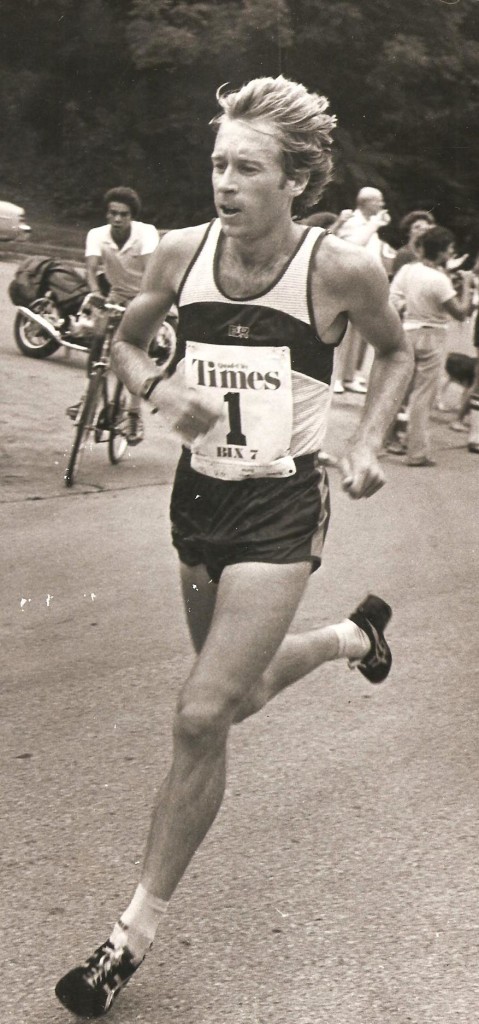By Don Doxsie
The first year it involved just 84 participants, including only three women. It almost didn’t happen at all because the city government momentarily balked at granting a permit. Then the organizers had to move a bunch of tables from a local street fair out of the way to clear enough space for their event.
But the very first Bix 7 road race finally did come off as scheduled on a steamy Saturday in July 1975. It was the start of something special.

American running legend Bill Rodgers has run the Bix 7 35 years in a row and calls it “the quintessential American sporting event.” Here he is pictured winning th e 1981 Bix 7 in his second visit.
Forty years later, that modest little race has become an Eastern Iowa institution, an event around which many in the community build their summers. They schedule weddings and class reunions on the same weekend because almost everyone they know will be in town. They come out and either watch or participate in the race even if they’re not into physical fitness.
It has been the largest non-marathon road race in the Midwest every year for more than a quarter century. From 15,000 to 20,000 people annually trudge through essentially the same arduous 7-mile course that was first used back in 1975.
“I’m so happy with the way it has developed,’’ said former Bettendorf resident John Hudetz, one of the founders of the Bix 7. “I’m really happy with the way people have stepped up to keep it going … It’s really sort of unbelievable.’’
It all began when Hudetz and a few other Quad-Cities fitness enthusiasts ran in the Boston Marathon in 1974.
The United States was just entering the running boom, a period in which there was a precipitous growth in the number of people interested in pursuing physical fitness. Hudetz and his friends had formed the Cornbelt Running Club and were enthralled by the atmosphere they found in Boston. They wanted to bring a small piece of it back to their home community and they settled on the idea of starting a race that would be held in conjunction with Davenport’s annual Bix Beiderbecke Jazz Festival.
Hudetz mapped out a course that began in downtown Davenport and began by going straight up a steep hill, then veering east through some of the oldest neighborhoods in town, finally reaching a turnaround in the McClellan Heights neighborhood and retracing its steps and returning to where it began. Much of the race is run along Kirkwood Boulevard, which is divided by a strip of grass, making it perfect for the out-and-back course.
The distance — 7 miles — is unique and the course can be extremely challenging, especially in the heat of an Iowa summer. Runners are almost never running on level ground. They’re either going uphill or downhill almost the entire way.
Hudetz was told by Davenport’s police chief just a few days before that first Bix in 1975 that he didn’t think the runners would be granted a parade permit that would allow them to run their little race on city streets. Hudetz finally persuaded the chief to let the race happen by telling him he could fire a 12-gauge shotgun as the starting gun. The force of the shotgun blast reverberated through the downtown area, rattling windows and momentarily stunning the gathered runners. But finally they began their trek up the hill. The Bix 7 had begun its voyage into local history.
TO READ MORE ABOUT THIS STORY AND OTHER FASCINATING STORIES ABOUT IOWA HISTORY, subscribe to Iowa History Journal. You can also purchase back issues at the store.
